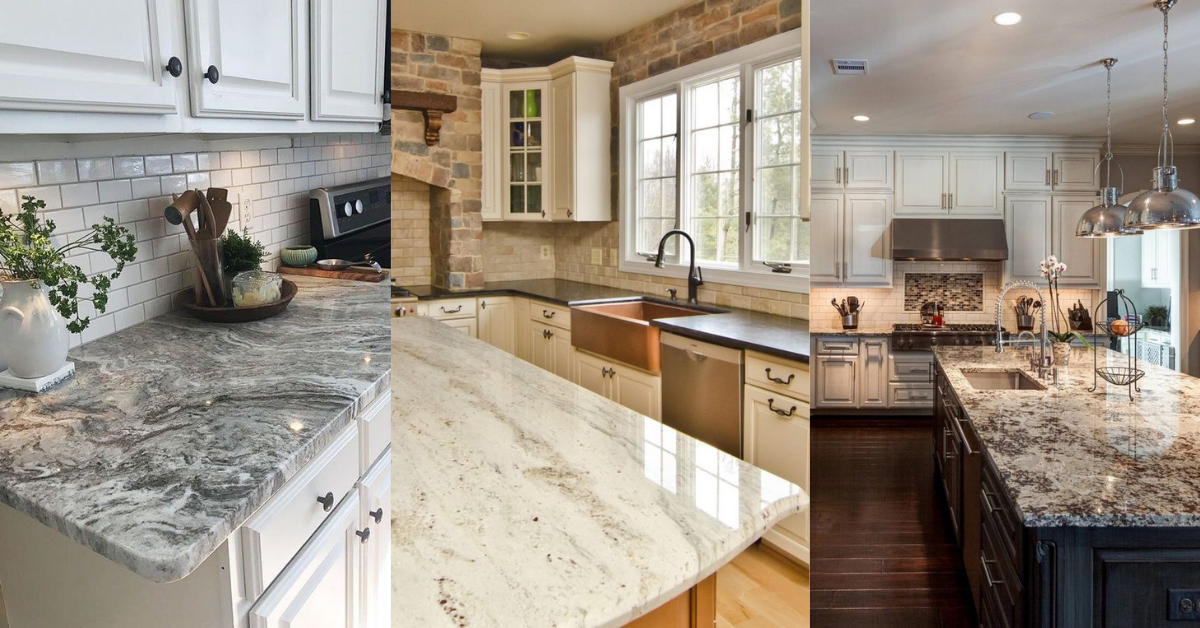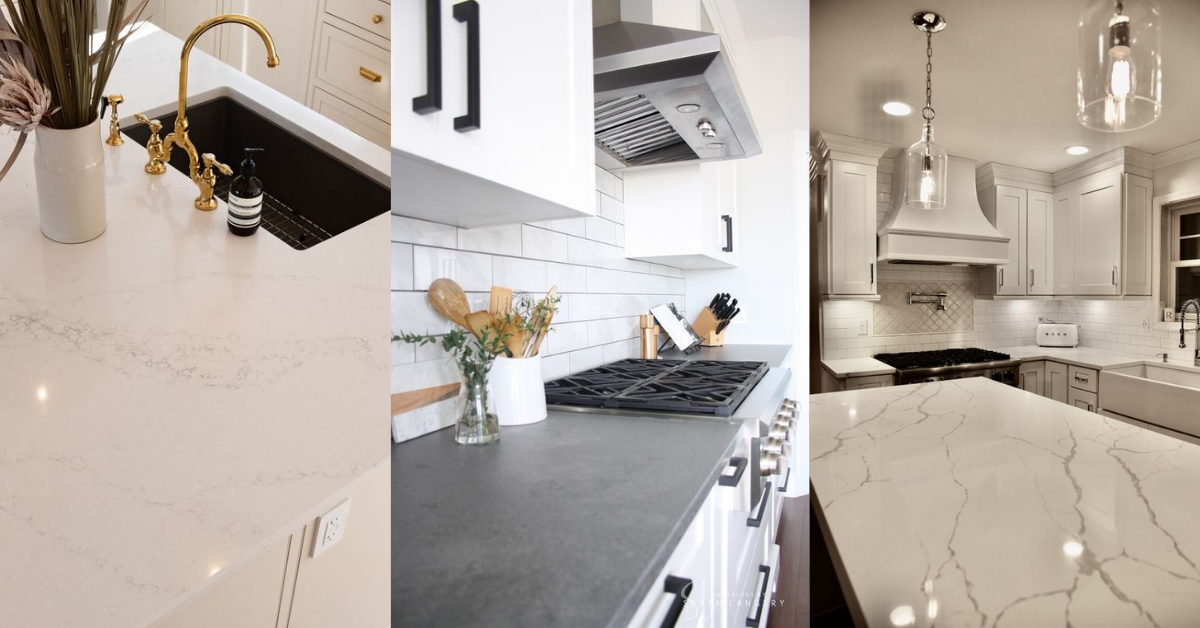How to choose the best countertops for your kitchen
Whether you’re doing a kitchen renovation or building a kitchen from the ground up in a new home — one of the key things you’ll need to consider is the type of surface you want for your countertops!
With so many options, it’s also one of the most daunting decisions — your kitchen counter is where most of the food preparation happens, and should be durable, beautiful, and preferably economical.
There are several different kinds of countertop surfaces in the market that range in price, quality and other benefits.
To narrow it down further, let’s break down the five most popular countertop surfaces available for your kitchen and the pros and cons of each.
1. Granite Countertops
Granite has been riding a wave of popularity for a while now and it’s easy to see why — its natural beauty is unmatched when compared to other surfaces.
Granite countertops as part of a kitchen remodel drive up home resale value, so are a good choice if you are looking to sell following your renovation.
The hard granite surface is both heat and scratch-resistant, and since its vibrant appearance varies from slab to slab, it makes for a dramatic, high-status countertop that really can’t be duplicated.
It’s also reasonably low maintenance, but as it is a porous surface it requires a sealant every 10 to 15 years to protect against staining and oil penetration.
Factors such as the grade (available 1 through 5), thickness, patterns and colours can affect the price — but granite tends to fall on the more expensive end of the spectrum. Thinner slabs are possible for those building on a budget— think three-quarter-inch rather than inch-and-a-half—and you’ll still see that money back when you go to sell your home.
If you like the look of granite but the full slabs aren’t accessible for your budget, you can also look at modular granite that is thinner than slab but larger than tile, less expensive and easier to install on your own — though it should be noted that this doesn’t have the same resale value as full granite slabs.
2. Quartz Countertops
Quartz countertops are engineered stone surfaces composed of quartz (a very hard mineral) mixed with resin and pigment.
Quartz can be a perfect low-maintenance solution for those who love the elegant look of marble but don’t want to deal with how delicate and high-maintenance it is.
Since Quartz is a manufactured material, the colours and pattern possibilities are endless and it can be made to look like marble or granite.
Quartz countertops are the most durable surfaces available, and are heat, scratch, stain-resistant, and non-porous which means you never have to seal them, unlike marble and granite. By following simple care instructions, your Quartz countertop will retain its beauty for many years to come.
Quartz is less expensive than granite and a more mid-range option for a kitchen remodel. Those with a choosy eye may notice the seams of quartz more than marble or granite, or think that the colour and pattern consistency looks artificial.
3. Solid Wood Countertops
Solid wood countertop surfaces are all about adding warmth and character to your kitchen.
While wood surfaces are beautiful, functionally they’re best used as a small focal point or just in one area of the kitchen, and not as the main food prep surface.
Wood countertops are heat resistant and once sealed are sanitary for chopping meat, but wood requires regular maintenance as it scratches easily and is susceptible to water and steam damage. Scratches and damage can be easily repaired with a light sanding and oil application, but you may have to do this more often than you’d like — wood countertops should be treated with a mineral oil application every month.
Depending on the species of wood — maple, oak, birch, teak or cherry — and the type of finish, the price of a wood countertop surface can range from moderate to high.
4. Solid Surface Countertops
Solid surface countertops, often known better by the brand name Dupont Corian, have a modern matte look that can be moulded seamlessly to integrate with appliances and other kitchen technology.
Unlike quartz or granite, it’s warm to the touch, but can offer the same seamless look as engineered stone with many different colour options that will be consistent throughout your kitchen.
That said, it is not as resistant to stains and scratches and can be damaged by heat. It’s a moderate to high-priced option for your kitchen remodel depending on the colour and finish you choose.
5. Laminate Countertops
If you have a tight budget and you’re only planning on a simple kitchen overhaul, laminate countertop surfaces are a solution within reach.
Laminate is plastic-coated and available in a limitless range of colours, even some that resemble granite.
It’s easy to clean and maintain — though is susceptible to burns and delamination from water damage — but it isn’t a long-lasting surface and won’t contribute to the resale value of your home.
If you’re in search of a stepping stone solution on your way to your “dream” countertop, laminate is a great option.
These 5 types of kitchen countertop surfaces can all make for a beautiful kitchen design—what you choose will ultimately come down to your budget, your personal taste, and how much maintenance and upkeep you want to do.
No matter what countertop surface you decide is best for your renovation, it’s important to hire an Edmonton home builder that you trust. Timberstone Builders has over 15 years of experience building, remodelling, and renovating award-winning custom dream homes in Edmonton and surrounding areas.




